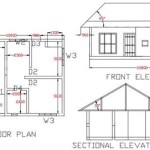Make a House Plant: A Guide to Growing Indoor Greenery
Bring nature indoors and enhance your living space with the beauty and benefits of houseplants. Whether you're a seasoned green thumb or just starting your botanical journey, this guide provides essential tips and insights to help you create a thriving indoor garden.
Choosing the Right Plants
Selecting the right houseplants depends on various factors, including available light, humidity, and personal preferences. Choose plants that suit your specific environment and care routine. For low-light areas, consider snake plants, pothos, or ZZ plants. If you have plenty of natural light, opt for succulents, orchids, or ferns. Consider humidity-loving plants like calatheas or prayer plants if your home is dry.
Light Requirements
Understanding your plant's light needs is crucial. Most houseplants require bright, indirect sunlight. Avoid placing them in direct sunlight, which can scorch their leaves. If natural light is insufficient, consider using grow lights to supplement their needs.
Watering Wisely
Watering is essential for plant health but overwatering is a common mistake. Different plants have varying water requirements, so it's important to research your specific species. Allow the soil to dry out slightly between waterings. Avoid soggy soil, as it can lead to root rot. Consider using a moisture meter to determine when your plants need water.
Fertilizing for Growth
Fertilizing provides essential nutrients for plant growth. Use a balanced fertilizer specifically formulated for houseplants. Follow the directions on the fertilizer package and apply it according to the frequency recommended for your plant. Overfertilizing can harm your plants, so it's best to err on the side of caution.
Controlling Pests and Diseases
Pests and diseases can affect houseplants, so regular monitoring and treatment is crucial. Inspect your plants regularly for signs of infestation, such as aphids, mealybugs, or spider mites. Treat immediately with an appropriate insecticide. Fungal diseases can also occur due to overwatering or poor ventilation. If you notice yellowing leaves, brown spots, or wilting, diagnose the cause and take appropriate action.
Repotting and Maintenance
As plants mature, they may need to be repotted. Choose a pot that is slightly larger than the current one and provides adequate drainage. Repot during the growing season and use fresh potting mix. Regular maintenance tasks like pruning, cleaning leaves, and removing spent blooms will keep your plants healthy and looking their best.
Beyond the Basics
To enhance your indoor garden, consider experimenting with propagation. Take cuttings or divide your existing plants to create new ones. You can also create a terrarium or moss pole to add interest and provide a unique environment for your plants. With a little care and attention, you can create a thriving and beautiful indoor oasis.

Diy Miniature Monstera Plant And Basket Planter

The Handmade Houseplants Book Will Help You Make Plant Art

12 Diy Indoor Plant Pot Ideas Your House Plants Will Love The Budget Decorator

How To Create A Plant Loving Home Rollingnature

Gardening 101 Tips For Happy Houseplants Lara Casey

Want To Make Your Houseplants Happy Try Giving Them An Outdoor Summer Vacation The Seattle Times

25 Best Indoor Plants Low Maintenance To Grow

Make Your House Plants Thrive Indoor Care Tips S

Make Growing Plants Indoor Easy With A Grow Room

How To Make Your Home Beautiful And Comfortable It S Better Have Some Potted Plants Lily Fashion Style House Indoor Room With








